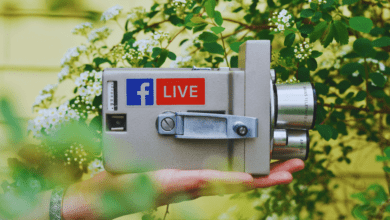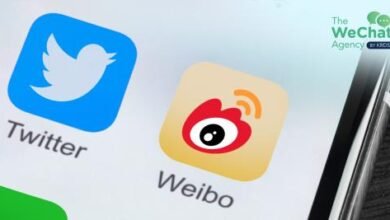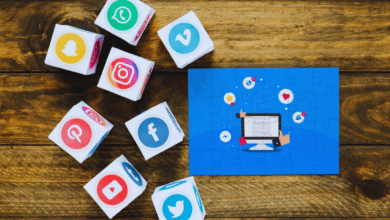Social Media Advantages and Disadvantages 2025 Guide
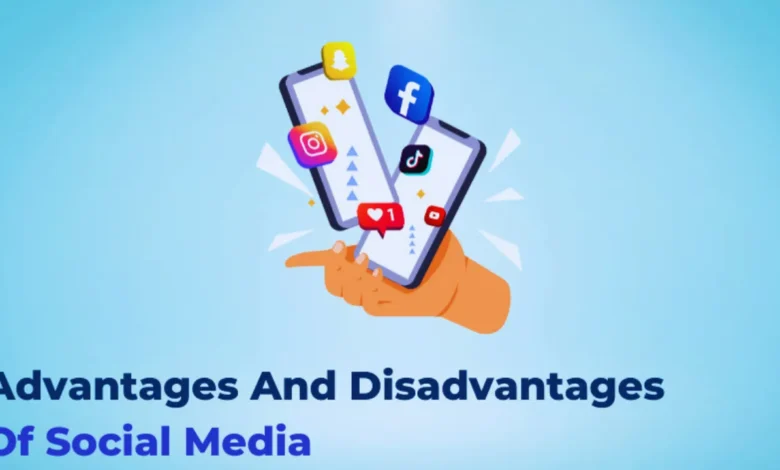
Social media in 2025 is no longer just a place to connect with friends; it has transformed into a powerful, AI-driven ecosystem that influences careers, healthcare decisions, education models, and even political systems. Platforms are blending virtual reality, emotion-sensing AI, and blockchain-backed identity protection to create environments where users don’t just scroll; they live, work, and grow. For the first time, users can switch between multiple virtual profiles in real time, curating different digital selves based on mood, need, or professional context.
While these futuristic features promise unmatched personalization and empowerment, they also bring new complexities. Emotional manipulation through microtargeted content, blurred boundaries between real and virtual achievements, and decentralized data ownership battles are shaping a new social media landscape that demands higher digital literacy than ever before. This 2025 guide uncovers not just the obvious pros and cons, but the hidden dynamics that even many tech experts are only beginning to explore.
The Power and Pitfalls of Social Media in 2025
Social media platforms have started deploying “sentiment-aware algorithms,” which adapt not only to what users like but also to their emotional states in real time. These algorithms detect micro-emotions through scrolling speed, pauses, and even subtle eye movements (on AR-integrated devices), tailoring content that matches or slightly shifts a user’s mood. While this leads to more emotionally engaging experiences, it also raises profound concerns about subconscious behavioral manipulation. Experts argue that unchecked sentiment targeting could reshape consumer behavior, political opinions, and even personal relationships without users fully realizing it.
Major Advantages and Disadvantages of Social Media
These dual developments make digital security more critical than ever. As technology advances, balancing user empowerment with identity safeguarding remains a central challenge.
| Factor | Advantages | Disadvantages |
| Communication | Instant, borderless interaction | Spread of fake news and disinformation |
| Business Growth | Boosts global market access | Increases competition and counterfeit risks |
| Education Access | Free online learning and certifications | Content overload causing distraction |
| Social Activism | Amplifies causes worldwide | Can lead to mob mentality or cancel culture |
| Personal Branding | Build global influence and identity | Opens up to online trolling and harassment |
New Advantages of Social Media Emerging in 2025
Social media is no longer just a tool; it is an ecosystem. Digital platforms now feature AI influencers, autonomous content curation, VR-based live events, and multilingual real-time communication. Platforms like MetaVerseNet and QuantumLink allow seamless transitions between virtual meetings, shopping, and leisure activities. Career networking is more efficient with AI matchmaking between job seekers and companies. Moreover, users have better control over digital identities through decentralized profile management systems.
Business Innovations Through Social Media Platforms
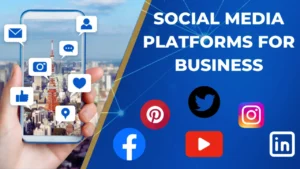
Companies leverage social media to boost agility, customer intimacy, and innovation. AI trend prediction helps brands design products customers will want six months into the future. Livestream e-commerce has exploded, with influencers hosting virtual storefronts. NFT-based loyalty programs reward consumers directly. The integration of micro-payments through blockchain allows creators to monetize small-scale content easily without relying on major platforms.
Traditional vs. Modern Social Media Marketing Strategies
Modern social media marketing uses predictive behavioral mapping, where AI not only tracks user behavior but also forecasts future needs based on micro-interactions. Traditional marketing relied heavily on demographics, but today’s strategies shift toward individual emotional timelines. Brands now create dynamic ads that evolve in real-time as user moods and preferences change. This hyper-adaptive marketing dramatically boosts engagement but demands higher ethical transparency.
| Strategy | Traditional Social Media (2020) | Social Media in 2025 |
| Influencer Marketing | Celebrity-based promotions | AI and micro-influencer marketing |
| Advertising Model | Paid ads with broad targeting | Dynamic AI-based personal ads |
| Customer Interaction | Scheduled support hours | 24/7 AI chatbot interaction |
| Brand Loyalty Building | Discounts and campaigns | Blockchain-backed loyalty rewards |
| Content Discovery | Manual hashtag use | Predictive discovery algorithms |
Emerging Disadvantages and Threats on Social Media
Despite the progress, new challenges emerge. Deepfake realism makes fact-checking essential for daily users. Hyper-personalized content feeds can create psychological bubbles. The rise of “emotional engineering,” where platforms predict and manipulate moods, stirs ethical debates. Governments struggle to regulate cross-border data breaches due to decentralized networks. Mental health concerns are rising as dopamine-driven designs keep users addicted longer than ever.
Mental Health and Digital Wellness in the Social Media Era
Mental health has become a critical topic. Leading platforms now offer “digital detox” modes that lock users out after certain usage thresholds. AI wellness companions suggest mindfulness breaks based on emotional activity detected through interaction patterns. Schools introduce digital resilience courses to train teenagers in healthy online behavior. Despite these measures, social media addiction statistics have risen sharply, prompting ongoing research and regulation proposals.
How Social Media Shapes Education and Career Development in 2025
Educational institutions increasingly collaborate with platforms like EduLink and LearnSpace, where students earn micro-credentials through social learning ecosystems. Career opportunities arise through global project hubs integrated within platforms like LinkedIn VR. Companies scout talent via AR-driven pitch sessions where candidates present skills in virtual rooms. This convergence of education and professional networking within social media shortens the gap between learning and employment significantly.
Wrapping Up
Social media in 2025 stands as both the world’s most empowering communication tool and its most intricate psychological playground. Users now benefit from real-time mental health support, immersive learning hubs, and AI-driven career matchmaking. But at the same time, they face new-age risks like emotional profiling exploitation, hyper-personalized echo chambers, and ethical gray zones created by decentralized networks operating beyond traditional laws.
As the line between digital and physical life continues to blur, the smartest users will be those who navigate social media consciously, leveraging its incredible opportunities while maintaining strong personal boundaries. The future belongs to those who understand that in 2025, social media is not just about engagement; it’s about managing your entire digital existence wisely and intentionally.
FAQs
How has AI changed the user experience on social media in 2025?
AI now anticipates user needs by delivering hyper-customized feeds, auto-responding to comments, and providing content in preferred formats like short reels or immersive VR. Virtual assistants summarize threads, recommend new contacts, and even suggest posting times based on predictive audience behavior. Social Media Advantages and Disadvantages 2025 Guide.
What steps can users take to protect their data on social media?
Platforms offer decentralized data vaults where users control information access permissions. Regular privacy audits through platform settings, the use of anonymous browsing modes, two-factor authentication, and biometric verification help safeguard identities. Users should actively limit app permissions and stay updated about platform policy changes. New tools also allow users to encrypt posts selectively for friend groups without exposing all information to the platform backend.
How does social media benefit small businesses today?
Small businesses enjoy unprecedented global reach through AI-powered micro-targeting. Real-time trend analysis enables brands to pivot quickly. NFT-based loyalty rewards create deeper customer engagement. Crowdfunding integrated directly into social apps also enables entrepreneurs to raise startup capital from community supporters with minimum effort.
In 2025, would it be possible to successfully restrict excessive usage of social media?
Social Media Advantages and Disadvantages 2025 Guide. Digital wellness frameworks embedded within apps help users monitor and limit screen time. Personalized usage reports highlight harmful patterns, and friendly AI nudges suggest healthier alternatives. Some platforms employ tokenized reward systems, encouraging users to log off after productive activities.
Are decentralized social media platforms safer than centralized ones?
Social Media Advantages and Disadvantages 2025 Guide. In what ways are companies utilizing social media marketing with augmented reality (AR)? Try-before-you-buy options, virtual store tours, interactive advertisements, and gamified brand experiences are all being offered by brands using augmented reality. AR shopping enables customers to see items in their natural settings before making a purchase. In addition to lowering return rates and increasing engagement metrics, the approach increases buyer confidence. AR-native advertisements that seamlessly blend storytelling, entertainment, and shopping are currently available on major platforms.
How does fact-checking in real time affect information on social media?
This helps reduce misinformation spread but sometimes sparks debates over bias and algorithm transparency. Content creators must adapt by citing verified sources to maintain trustworthiness. As users grow savvier, demand for transparent fact-checking methods and ethical AI governance becomes louder, reshaping content creation norms.


